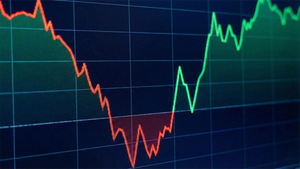
September 29, 2025
In an era increasingly defined by digital innovation, cryptocurrencies have emerged as a captivating, yet profoundly complex, asset class. Promising decentralized finance, rapid transactions, and potentially exponential returns, digital assets like Bitcoin and Ethereum have drawn millions of investors worldwide. However, beneath the allure of groundbreaking technology and speculative gains lies a treacherous landscape fraught with significant dangers. As of late 2025, the financial world continues to grapple with the implications of this nascent market, and prospective investors are urged to exercise extreme caution before venturing into the volatile realm of digital currencies.
This article delves into the primary risks associated with cryptocurrency investment, highlighting the inherent instability, regulatory ambiguities, pervasive security threats, and the fundamentally speculative nature that defines this market.
Extreme Volatility: A Rollercoaster Ride with No Safety Bar
Perhaps the most immediately apparent danger of cryptocurrency investment is its unparalleled price volatility. Unlike traditional stocks or bonds, which often react to fundamental economic indicators and company performance, cryptocurrencies can experience dramatic and unpredictable price swings within minutes, hours, or days.
Historical data vividly illustrates this phenomenon. Between January 2019 and December 2021, the total value of the crypto market plummeted by 20% or more on nine separate occasions within a single day. A particularly stark example occurred on March 12, 2020, amidst the initial global COVID-19 pandemic restrictions, when the total value of spot crypto assets astonishingly fell by 43%. While such volatility can also lead to rapid gains—the market saw a 1600% increase over 14 months following that 2020 dip, with seven days experiencing rallies of 10% or more—it underscores the severe risk of substantial losses. The illiquidity of many crypto assets further exacerbates these swings, making it challenging for investors to exit positions quickly without significantly impacting the price. For an investor, this means that a substantial portion of their capital can be wiped out in a blink, making long-term financial planning incredibly challenging and short-term speculation akin to gambling.
Regulatory Wild West: An Uncharted and Evolving Territory
A critical impediment to the maturation and safety of the cryptocurrency market is the pervasive lack of consistent and comprehensive regulation across global jurisdictions. As of September 2025, the regulatory landscape remains a patchwork, with many crypto asset exchanges and platforms operating without the robust oversight applied to traditional financial institutions. This absence of regulation means investors often lack crucial protections, such as secure handling of client funds, stringent safekeeping of assets, protection of personal information, and effective measures against market manipulation.
Governments worldwide, including bodies like the U.S. Securities and Exchange Commission (SEC), are still debating how to classify digital assets—as securities, commodities, or currencies—leading to an environment of legal ambiguity. This uncertainty complicates everything from tax obligations to the ability to recover funds in case of platform failure or fraud. A sudden shift or crackdown in regulatory policy in a major economic bloc could trigger a market-wide collapse, leaving investors vulnerable. The ongoing evolution of these frameworks contributes to a climate of "fear, uncertainty, and doubt" for both financial supervisors and individual investors.
Security Nightmares: Hacks, Scams, and the Peril of Lost Keys
The decentralized and often pseudonymous nature of cryptocurrencies, while lauded by some, also introduces significant security risks. The ecosystem is rife with hacking incidents, sophisticated fraud schemes, and outright scams. Unlike traditional banking, there's often no central authority or government entity to intervene or reimburse an investor who falls victim to cybercrime.
Vulnerabilities exist at every level:
- Individual Wallets: Investors can lose their entire holdings if they misplace or lose access to their private digital keys, which are essential for accessing their cryptocurrency.
- Exchanges: Centralized exchanges are frequent targets for hackers. High-profile incidents of exchange breaches have resulted in the theft of billions of dollars worth of digital assets over the years.
- Fraud and Scams: The crypto space is a fertile ground for Ponzi schemes, pyramid schemes, fake initial coin offerings (ICOs), and phishing attacks. The pseudonymous nature of transactions often makes tracing and recovering stolen funds exceedingly difficult.
- Smart Contract Risks: Many decentralized finance (DeFi) platforms and lending protocols rely on automated smart contracts. These programs, while innovative, are susceptible to programming bugs or exploits, which can lead to the irreversible loss of user funds.
The catastrophic collapse of FTX Trading Ltd. (FTX:BAH) in November 2022 serves as a stark reminder of the potential for fraud and mismanagement, devastating millions of customers and significantly shaking investor confidence in even the largest platforms.
The Speculative Bubble: Value Based on Sentiment, Not Fundamentals
Cryptocurrencies are, by and large, highly speculative assets. Their value is often driven more by market sentiment, social media trends, and the anticipation of future demand rather than by traditional financial metrics or underlying economic activity. Unlike a company stock, which represents a share in a business with tangible assets and revenue streams, many cryptocurrencies lack intrinsic value derived from a productive enterprise.
This speculative environment makes them acutely susceptible to rapid price swings based on news, influencer opinions, and herd mentality. The price of a cryptocurrency is frequently determined solely by what the next person is willing to pay, creating a classic "greater fool" scenario. While stories of individuals making fortunes from early investments abound, these are often outliers, and past performance is absolutely no guarantee of future results. The potential for high returns in this market is directly correlated with an equally high risk of losing all invested capital. The absence of standardized financial disclosures further hinders investors' ability to conduct due diligence and accurately assess true risks.
Conclusion: Proceed with Extreme Caution
As the cryptocurrency market continues to evolve, its inherent dangers remain prominent. The extreme volatility, coupled with a fragmented and uncertain regulatory landscape, pervasive security threats, and a fundamentally speculative nature, makes it a high-risk proposition for even experienced investors. For the average retail investor, the risks are amplified, potentially leading to significant financial losses.
While the promise of blockchain technology and decentralized finance holds long-term potential, the current state of cryptocurrency investment demands an exceptionally cautious approach. Investors are strongly advised to conduct thorough research, understand the profound risks involved, invest only what they can afford to lose, and consider diversifying their portfolios with more traditional, regulated assets. The allure of quick riches in the crypto world often overshadows the very real and present dangers that can lead to significant financial peril.




